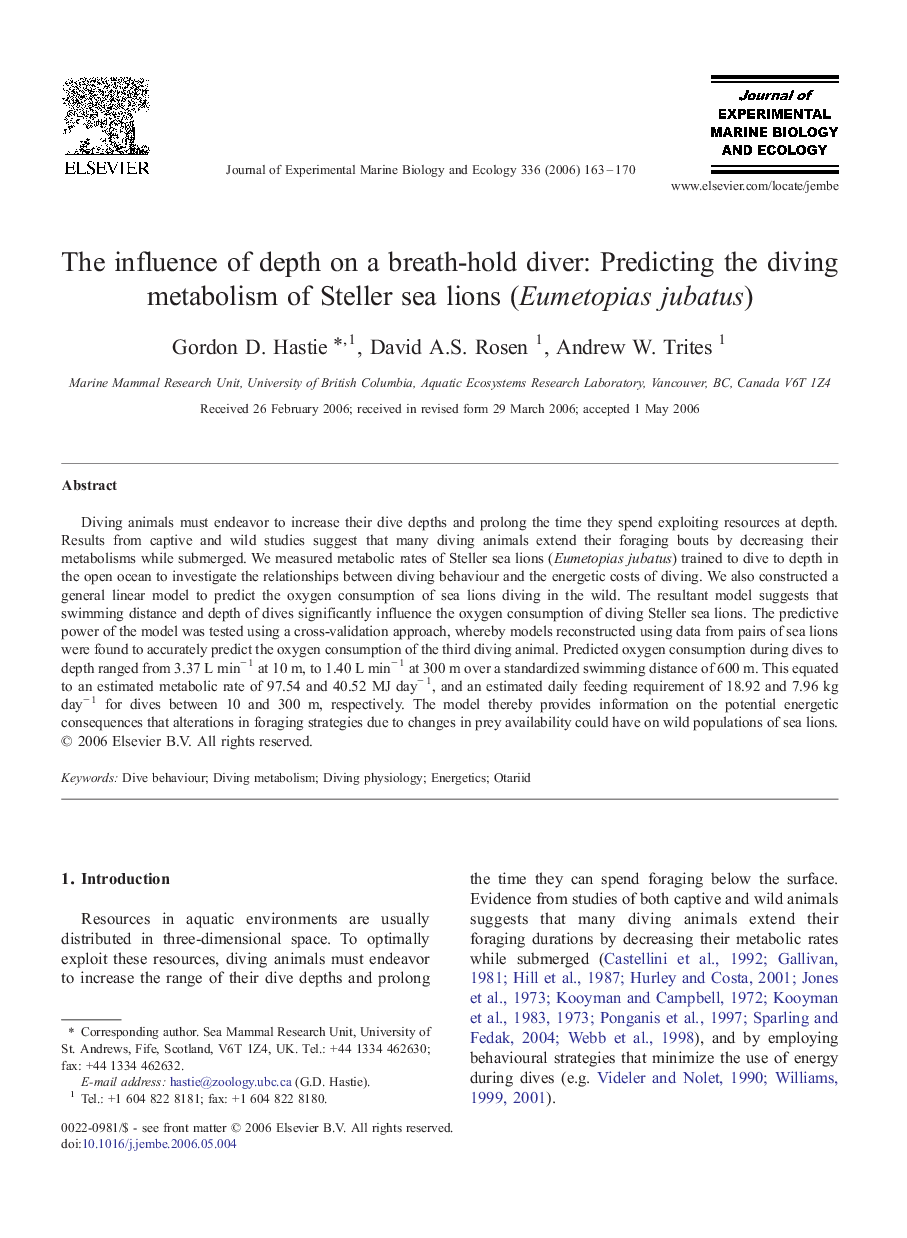| Article ID | Journal | Published Year | Pages | File Type |
|---|---|---|---|---|
| 4397949 | Journal of Experimental Marine Biology and Ecology | 2006 | 8 Pages |
Abstract
Diving animals must endeavor to increase their dive depths and prolong the time they spend exploiting resources at depth. Results from captive and wild studies suggest that many diving animals extend their foraging bouts by decreasing their metabolisms while submerged. We measured metabolic rates of Steller sea lions (Eumetopias jubatus) trained to dive to depth in the open ocean to investigate the relationships between diving behaviour and the energetic costs of diving. We also constructed a general linear model to predict the oxygen consumption of sea lions diving in the wild. The resultant model suggests that swimming distance and depth of dives significantly influence the oxygen consumption of diving Steller sea lions. The predictive power of the model was tested using a cross-validation approach, whereby models reconstructed using data from pairs of sea lions were found to accurately predict the oxygen consumption of the third diving animal. Predicted oxygen consumption during dives to depth ranged from 3.37 L minâ 1 at 10 m, to 1.40 L minâ 1 at 300 m over a standardized swimming distance of 600 m. This equated to an estimated metabolic rate of 97.54 and 40.52 MJ dayâ 1, and an estimated daily feeding requirement of 18.92 and 7.96 kg dayâ 1 for dives between 10 and 300 m, respectively. The model thereby provides information on the potential energetic consequences that alterations in foraging strategies due to changes in prey availability could have on wild populations of sea lions.
Keywords
Related Topics
Life Sciences
Agricultural and Biological Sciences
Aquatic Science
Authors
Gordon D. Hastie, David A.S. Rosen, Andrew W. Trites,
